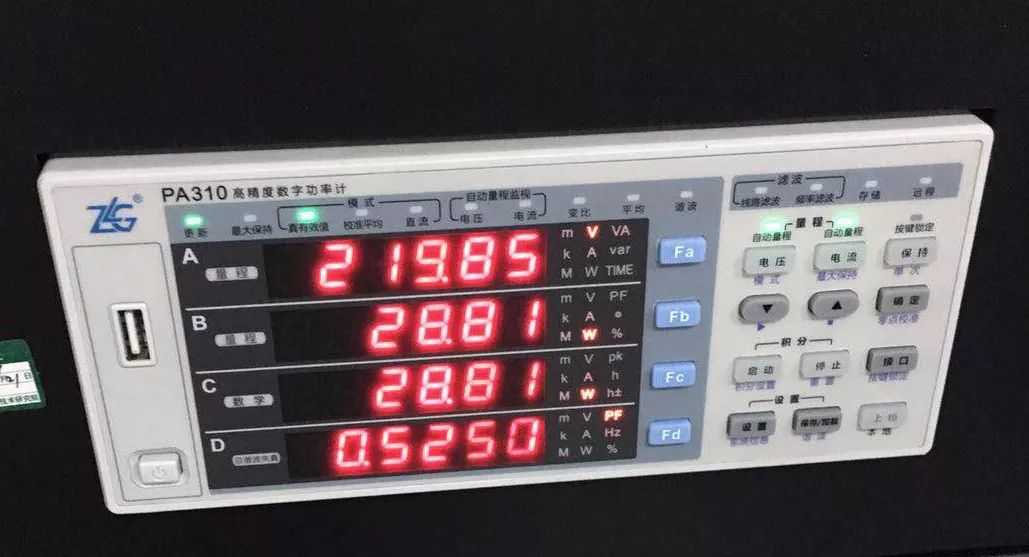During the debugging process, engineers often find that the same signal is tested with different devices, and the results tend to be different. Which one is the result? We need to scientifically select equipment for testing, and don't be fooled by the wrong results.
Different test equipments have typical applications and measurement ranges. The reason why the measurement results are inconsistent is often related to the parameter characteristics of the test equipment itself. One of the key indicators is the bandwidth of the instrument. Instruments with different bandwidths, even if they test the same signal, often have different test results.
First let's take a look at what the instrument measures bandwidth. The measurement bandwidth of the instrument is simply the frequency range that the instrument can test. The frequency point at which the signal amplitude is attenuated to -3dB is called the bandwidth cutoff frequency point, that is, when a certain frequency is input, the measured amplitude attenuation is actual. At 70.7% of the amplitude, the frequency point is called bandwidth, as shown in the following figure.

Different measuring instruments have different bandwidths. There are many reasons, some of which are determined by product applications and test objects. For example, some test applications do not use high bandwidth, or the signal frequency is relatively fixed. The test also has corresponding standards, such as our common power quality analyzer. The measurement is mainly for the grid signal, and the signal frequency of the grid is 50Hz/60Hz, so the bandwidth of the dedicated power quality analyzer is often also in this range. Another example is an oscilloscope. The bandwidth of an oscilloscope is often very large. The commonly used bandwidths on the market are generally 200MHz, 350MHz, and 500MHz. High-frequency applications also use bandwidths above 1GHz. Because oscilloscopes are often used to capture very fast signals and require a complete reduction of waveform shape, bandwidth must be high to achieve functionality.

There are also some instruments that have different product positioning or their own technical bottlenecks, and the bandwidth varies. Such as power analyzers, power meters, electrical parameters, and so on. As a high-end measuring instrument, the power analyzer is generally high-precision and high-bandwidth. The bandwidth can be up to 2MHz or even 5MHz. The power meter is more used for product testing and production testing, so the bandwidth will be relatively low, generally in the range of 100KHz~500KHz. Most of the parameter tables are used in low-end applications, and the bandwidth generally does not exceed 50KHz.


What is the impact of the difference in bandwidth on the test results? Below we look at an actual test case, in a LED test site, use two power meters with different bandwidths to test the LED drive input (commercial electric frequency 50Hz) electrical parameters, including voltage, current, power, power factor, etc., the test results are as follows The figure shows:


It can be seen from the figure that the voltage and active power of the two devices are basically the same, but the power factors are quite different. The calculation of the power factor has a very close relationship with the reactive power, so it can be judged that the reactive power of the two devices is definitely different. The nominal accuracy of the two devices is the same, but the bandwidth is quite different. The bandwidth of the PA310 of Zhiyuan Electronics is 300KHz, while the bandwidth of another device is only 5KHz. The working principle of the LED driver module is the switching output, so there must be high frequency signal introduction, and the device with low bandwidth can not test the high frequency signal. The test results are also far from the devices with high bandwidth.
In order to verify that the test results are indeed caused by bandwidth, we set up the line filter for the PA310, opened a 5.5KHz line filter, and then compared the power factors of the two tests. As a result, the power factors of the two devices are indeed the same. This also proves that bandwidth is indeed an important factor affecting the test results.
Seeing this, some people will ask, the higher the bandwidth, the better. In fact, the bandwidth is not as high as possible, because the higher the bandwidth, the more high-frequency signals are introduced, and many high-frequency signals will negatively affect the test results. Impact, this is not what we want. However, the test bandwidth of the instrument must be able to meet the frequency range of the device under test. Otherwise, the test will not be able to detect the real signal, and it will be a wrong conclusion.
Priva PF series Rental led display are specally designed for stage or event show which need fast installation and disamantle. One cabinet type could be used for indoor and outdoor enviroment. It also has option for curve. Advanced high brightness with high gray scale technology, high contrast ratio, excellent refresh ratio, and all these features guarantees a brilliant and beautiful Rental LED screen
Along with the LED encapsulation technology and SMT production line developed , the outdoor small pixel pitch LED display screens or High definion led display for rental get popular.Stage LED display are designed for stage or shows. Nowadays, more and more shows and events are equipped with rental LED screen for video displaying or stage background. Due to its unfixed usage occasion, Stage LED display are requested to be easy assemble and disassemble.
Rental Led Display ,Rental Led Screen, Stage Led Display, Stage led screen
Shenzhen Priva Tech Co., Ltd. , https://www.privaled.com